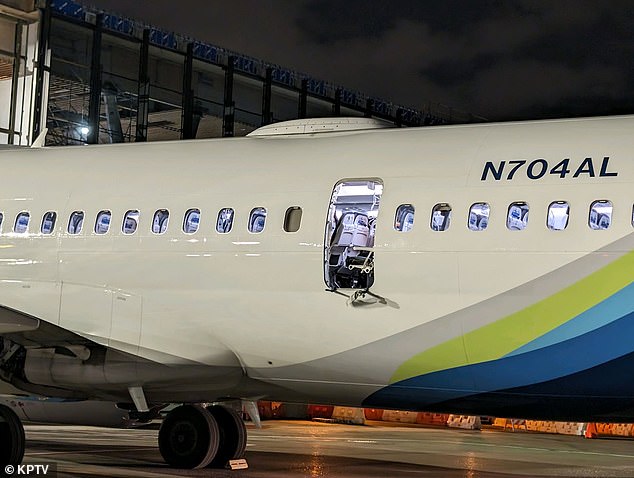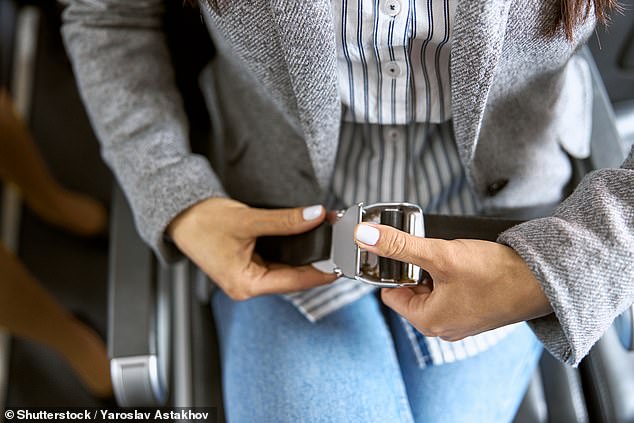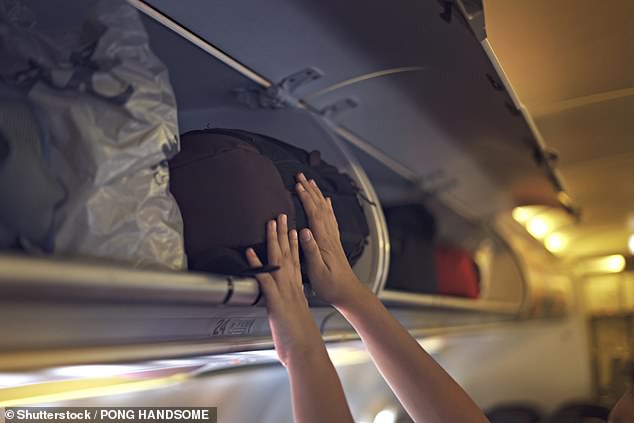Flight expert reveals what you should REALLY do in the event of a mid-air emergency following Alaska Airlines door blow out – from exactly what to wear to how you can best protect your CHILDREN
Passengers aboard a recent Alaska Airlines flight were terrified mid-flight when one of the doors blew out at 16,000 feet, forcing an emergency landing.
One of the airline’s Boeing 737 Max 9s took off PortlandOregon, heading to on January 5 California but shortly after take-off one of the door ‘plugs’ flew off and 171 passengers thought they were saying their last goodbyes to loved ones.
Thanks to the quick actions of the pilots and crew, the aircraft was returned to the take-off point safely and without injuries. Fortunately, no one was assigned to the seats next to the missing door.
A Florida-based flight expert and experienced pilot who spoke anonymously to DailyMail.com also praised the passengers for remaining calm. Here she gives some of her best tips for dealing with such an incident, from dressing for survival to always listening to the crew.
Dress to survive
A Florida-based flight expert and experienced pilot says it’s best to wear warm clothes during a flight in case an emergency occurs that exposes you to the cold (stock image)

Passengers aboard a recent Alaska Airlines flight became terrified mid-flight when one of the doors blew out at 16,000 feet, forcing an emergency landing
The flight expert says that during a safety training she was once told that she should always wear fire-resistant clothing in the air, ‘no easily flammable clothing and certainly no stockings.’
If something like a door pops out, she also emphasizes the importance of being warm and “wearing your winter woolens,” while if you’re using an emergency slide, “just wool socks and sneakers are a good idea over high heels , along with cotton trousers and a long-sleeved wool sweater.’
She concludes: ‘If you knew there was an emergency, how would you dress, how would you think, what would you do… ask yourself that before every flight.
‘Preparation is the key to survival!’
Safety instructions really matter
No matter how much you fly, the flight expert says it’s always important to pay full attention to the safety briefing as planes differ slightly.
Even if you’re in the same seat, she adds, “the person next to you may be different or the flight attendant may give different advice.”
She recommends, “Focus on what’s being said and familiarize yourself with the layout of the plane.
‘It’s a good idea to count the lines to the nearest exit and locate the other emergency doors.
“Or if you’re the exit seat, be 100 percent prepared to help if something happens.
‘If you can’t help, or aren’t willing to help, it’s essential that you swap seats with someone who will. Many lives could depend on this.’
Knowing how to use an oxygen mask is essential
When the door of the Alaska Airlines flight opened, the crew immediately put on their oxygen masks and the passengers followed suit.
The flight expert says it’s essential to follow the safety instructions so you know how to fit one on correctly. This is especially important if you’re traveling with children who are too young to do this themselves.
All safety instructions state that you must put on your own oxygen mask before assisting anyone else.
“This also applies to the life jacket and knowing how to put it on,” the pilot adds.
ALWAYS wear a seat belt

Even though it’s tempting to unbuckle, the flight expert recommends always keeping your seat belt on in unexpected turbulence (stock image)
As soon as the seat belt sign goes off, many passengers rush to unbuckle it, but the flight expert says it should be worn at all times to maximize safety.
She explains, “I’m a person who sits down, puts on my seat belt, and the only time I take it off is to go to the bathroom or after the seat belt sign at the gate goes off after landing.
‘It’s not just doors blowing off the fuselage that I’m concerned about, it’s also clear air turbulence.
‘This is a phenomenon that the pilots cannot warn you about, it is random turbulence that occurs in a clear blue sky.
“So even though the ‘seat belt’ sign is off so you can get up and go to the restroom, this is not a green light to sit in your seat without your seat belt, low and tight around your waist.”
Any item can be a rocket – secure everything!

All loose items should be stowed in the overhead storage compartments or in the rear seat pocket, expert says, because ‘every item is a potential missile’ in the event of an emergency
“Passengers should place all unnecessary items in checked baggage or overhead bins,” the flight expert said.
She notes that this is because “every object is a potential missile” and “my neighbor’s metal bottle or iPad could easily land on my head.”
With this in mind, she advises, “Before you leave, store any larger items you deem necessary in under-seat bags or in the seat pocket. Keep the tray stowed away.
‘Keep chords out of the exit areas. Think: how quickly can I get out of this tight spot, in the dark, in a smoke-filled cabin, surrounded by more than 100 other people.
‘Imagine what would happen if the airplane door blew off or the window next to my seat blew out. What would your first reaction be?’
Use a car seat for children under two years old
For airline passengers traveling with children under the age of two, the flight expert recommends using “an approved car seat, just as you would in a motor vehicle.”
She says this is because “research shows that in an emergency the baby will be placed many rows away from the parent whose lap it was sitting on.”
If you follow this advice, it means that you will have to reserve an extra seat for the child.
This is also in line with the Federal Aviation Administration.F.A.A).
The government transportation authority states: ‘While children under their second birthday may travel as lap children, the FAA strongly discourages this practice and recommends that you secure your child in an approved child restraint system (CRS) in their own seat . for the entire flight.
Although there is no legal prohibition against the use of a booster seat or harness vest (or other unapproved devices) for a lap child only during the cruise portion of the flight, airlines have policies that may or may not allow the use of these devices.
‘Contact your airline.’
